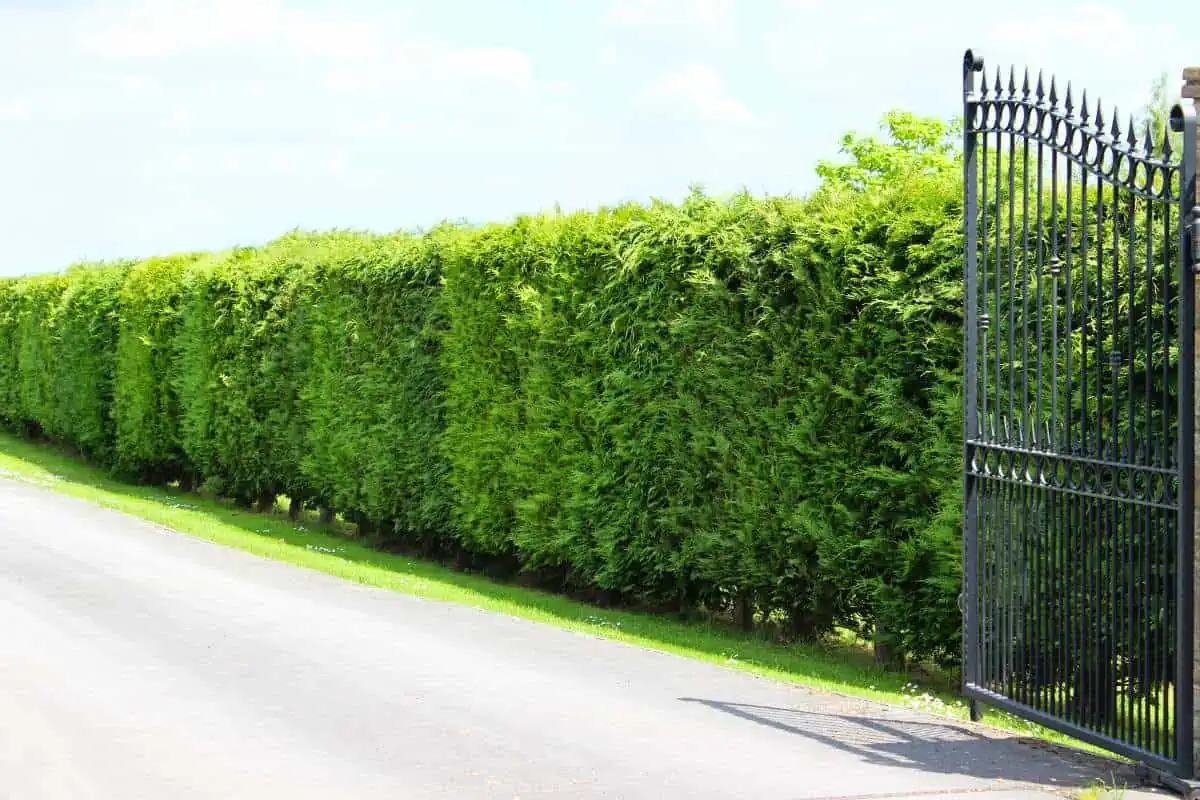It’s important to have your own space away from the prying eyes of the outside world. That’s one reason to plant some trees in your backyard or side yard. They’ll give you privacy from neighbors and provide you shade for years to come.
This article takes a look at some of the most popular trees to provide privacy. We’ll investigate trees that grow fast, trees that adapt to tight spaces, and trees you’ll be able to show your grandkids 50 years from now.
All the trees on this list have thick leaves or a strong canopy so they provide an eco-friendly border between your yard and the outside world. Many of them are coniferous or evergreen so you can rely on them year-round.
Keep reading to learn about how to make your backyard a private oasis!
8 Trees for Privacy from Neighbors
1. Leyland Cypress
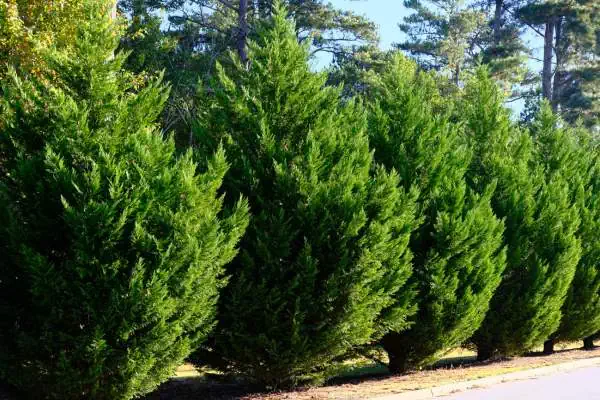
- Maximum height: 60 feet
- Growing zone: 6 to 10
- Sunlight needs: Full Sun
Most garden centers rate the leyland cypress as the most popular privacy screening tree in the United States. It’s used in botanical gardens and housing subdivisions; farms and along interstate highways.
The evergreen tree grows rapidly – up to 5 feet in a single year – and they max out at 60 feet tall. If you want something more solid, Leyland cypresses can be pruned into a hedge. It will take regular yearly maintenance to maintain this shape.
They thrive in any soil, as long as there is good drainage. Standing water is a death knell for these evergreen trees.
2. Nellie Stevens Holly
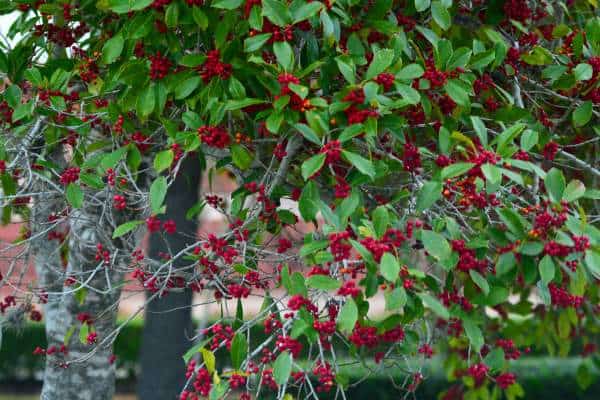
- Maximum height: 25 feet
- Growing zone: 6 to 9
- Sunlight needs: Full Sun
Holly bushes might not be trees, but they grow tall enough to classify as such. This robust plant is a great visual barrier often planted in neighborhoods and along yard edges. It’s up to you to decide their shape.
Some gardeners prefer to keep them cone-shaped, which is their natural form. Others let them grow into a hedge. If you plan to grow them into a hedge, remember that it will take several years for the bushes to grow large enough to run together visually.
Holly has sharp leaves, but it is visually appealing. They attract songbirds in the autumn and winter when their bright red berries mature. This tree might not be the best for you if you have children or pets, since holly berries are poisonous to people, cats, and dogs.
3. Spartan Juniper
- Maximum height: 20 feet
- Growing zone: 6 to 10
- Sunlight needs: Full to Partial
It can be difficult to grow a privacy screen if your backyard isn’t sunny most of the time. Enter spartan juniper, a partial-sun evergreen tree that can adapt to mixed conditions. It grows up to 20 feet tall, so it’s not as robust as other privacy border trees, but it is a great addition to a mixed screen that needs some visual appeal or is short on space.
They’re really great in rocky soils or inhospitable places. Cold and heat aren’t too much of a challenge either. Visually, they’re more olive than forest, which may make them blend in better out west compared to the eastern United States.
4. Thuja Green Giant Arborvitae
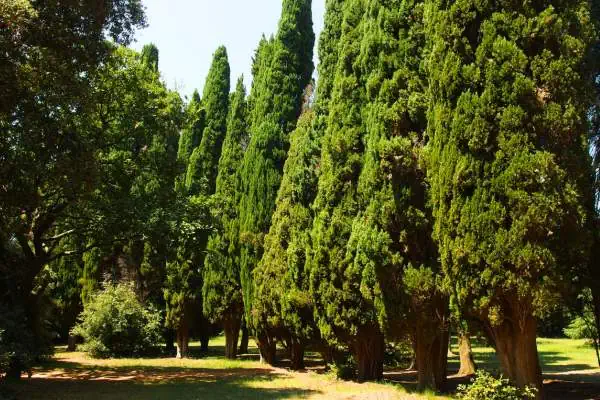
- Maximum height: 50 feet
- Growing zone: 5 to 8
- Sunlight needs: Full to Partial
This plant is great if you live in an area where deer make regular visits to your yard. They won’t find this arborvitae’s evergreen leaves very palatable. Like the cypress on this list, it can grow up to 5 feet in a single year.
They max out at a slightly smaller height – 50 feet – and grow to be about 15 feet around. Thuja Green Giant Arborvitae is a good option for those with smaller yards. It grows quickly but won’t eat into the yard’s square footage.
It’s also a great option if you spend time outdoors or have kids that play in the backyard. This tree’s leaves are soft and forgiving, unlike other densely packed trees with sharp leaves.
5. Emerald Green Arborvitae
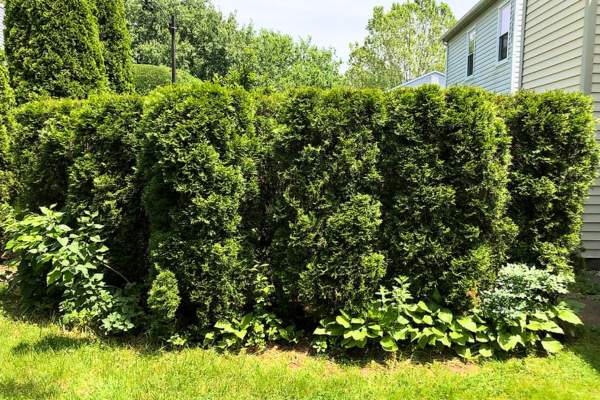
- Maximum height: 15 feet
- Growing zone: 3 to 8
- Sunlight needs: Full Sun
The smallest patio can still benefit from an Emerald Green arborvitae. It’s optimal for yards that can only accommodate a footprint of a few feet. They have a slower growth rate – just 3 feet per year – but that could provide visual interest if they’re planted with other fast-growing border plants.
Like other arborvitae, it has feathery soft leaves that aren’t tasty to common herbivores. They need well-draining soil to get established.
6. American Holly
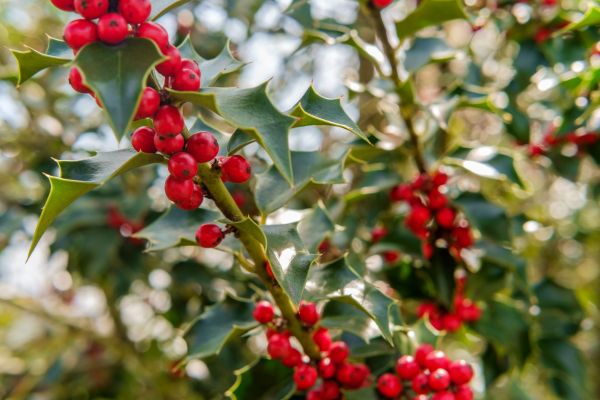
- Maximum height: 50 feet
- Growing zone: 5 to 9
- Sunlight needs: Full Sun
If you have a large yard or a big gap in your fence that needs to be filled ASAP, try an American Holly. This sprawling shrub can be pruned into a tree-like shape, a box hedge, or permitted to grow in its natural habit – a wide bush that can reach up to 20 feet wide and 50 feet tall!
They grow almost anywhere across the United States. Whether your backyard is in central Florida, the Southeast, the lower Midwest, or the Pacific Northwest, you can grow an American Holly.
7. Italian Cypress
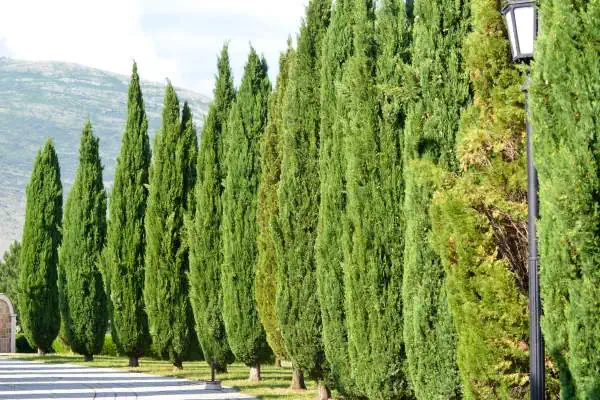
- Maximum height: 40 feet
- Growing zone: 7 to 11
- Sunlight needs: Full Sun
Americans may be familiar with the Italian Cypress thanks to movies set in the Tuscan hills. But did you know you can plant your very own taste of Italy in your backyard? This evergreen tree grows straight and tall in just a few years.
They don’t spread out, but that’s what gives them their Mediterranean charm. Make sure your Italian cypress gets full sun, has well-draining soil, and doesn’t get too cold. They’re versatile and adapt to many temperature conditions.
This tree might be the best bet for a Californian backyard.
8. Colorado Blue Spruce
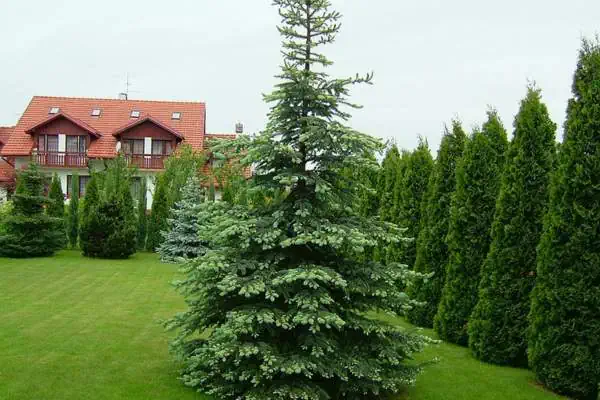
- Maximum height: 60 feet
- Growing zone: 2 to 7
- Sunlight needs: Full to Partial
The Colorado blue spruce will add visual interest and curb appeal to your privacy screen. It’s best mixed in with a multi-layer border, but it also works as individual trees planted several feet apart. This tree has a blue tinge thanks to wax coating each needle.
Harsh weather conditions will wear away the coating, but the calm green color underneath is appealing too. They grow up to 2 feet per year and can even be grown inside containers.
